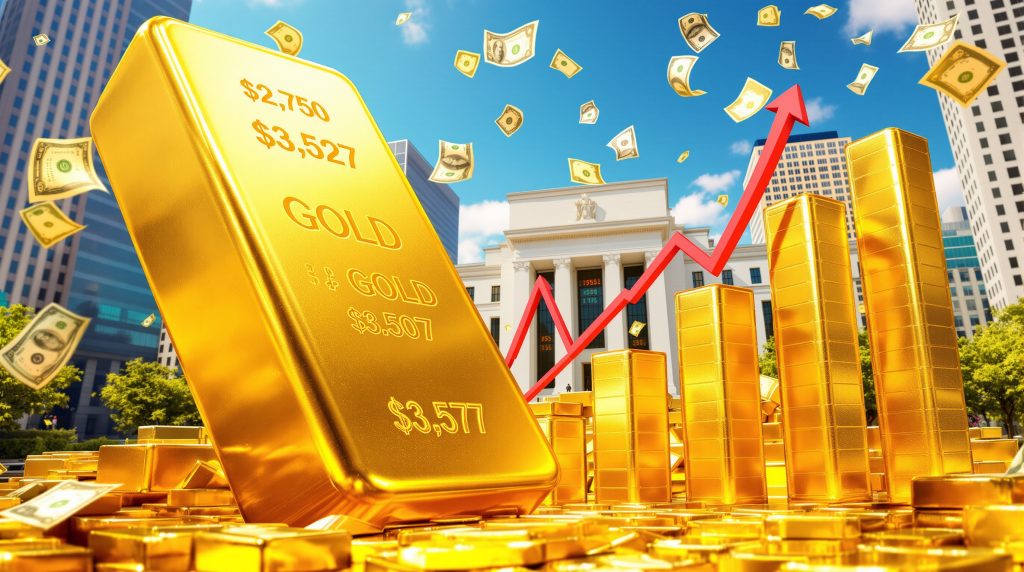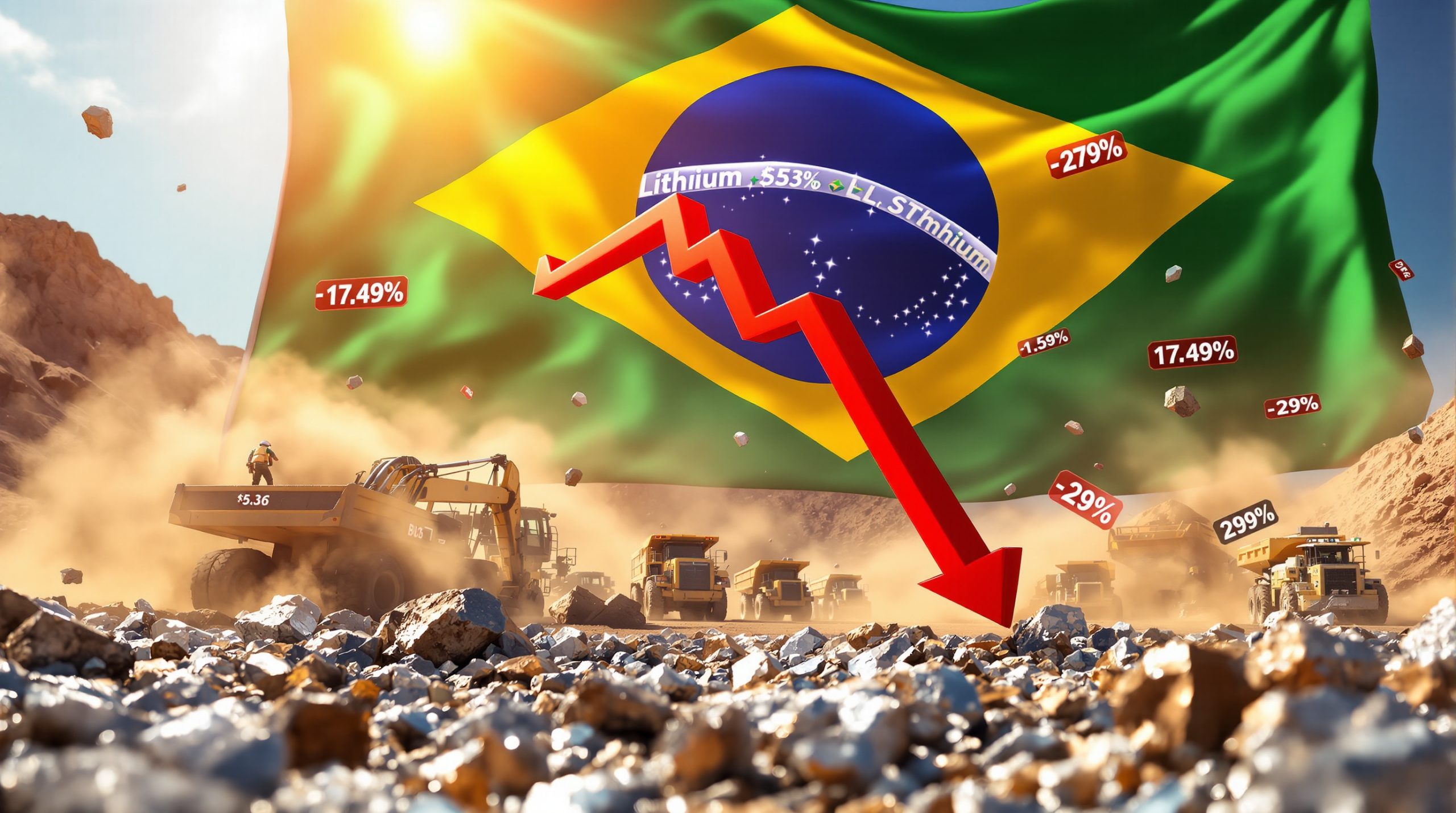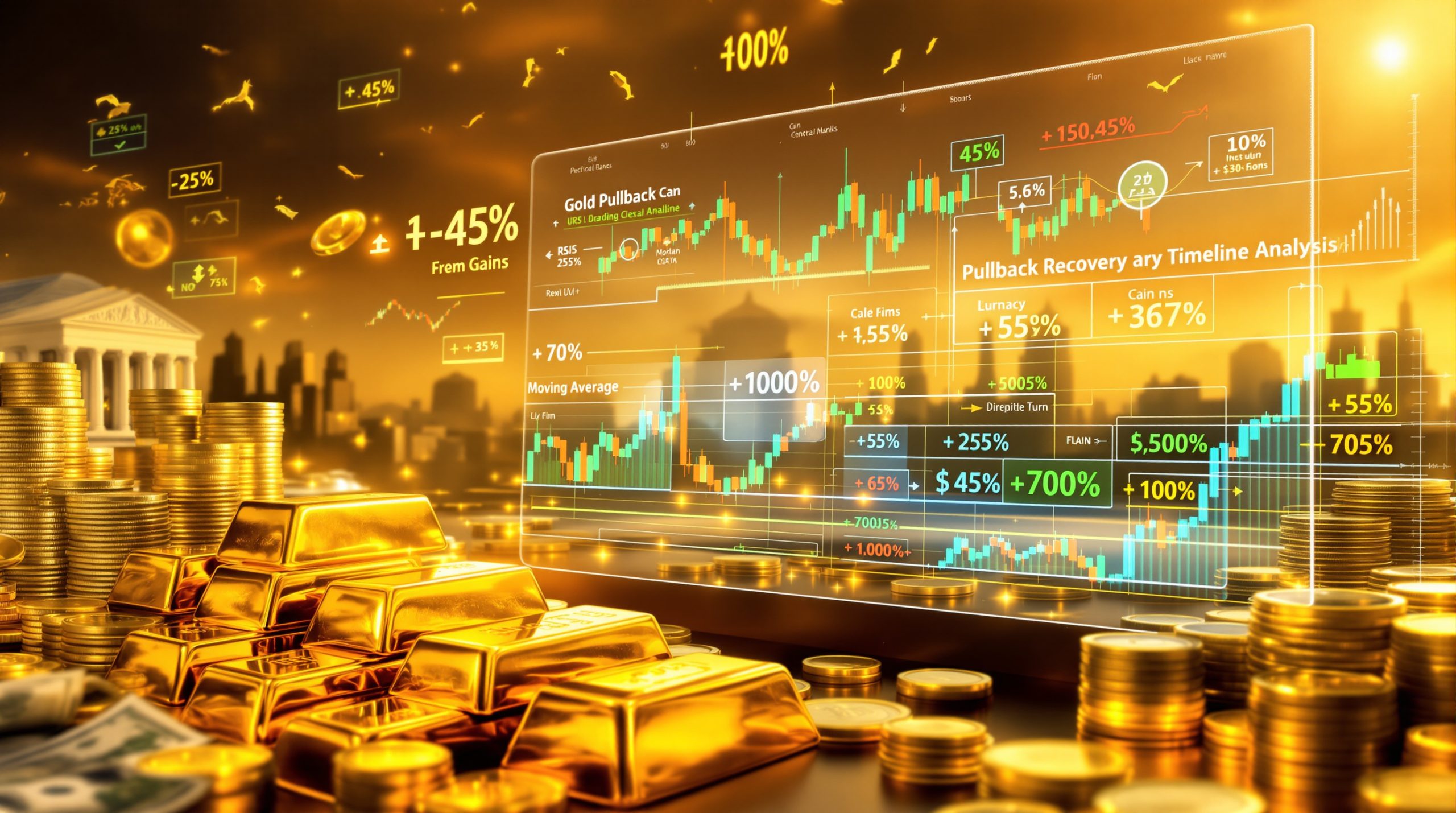Understanding the Gold Price Rally in 2025
Gold has surged more than 34% in 2025, reaching unprecedented levels above $3,527 per ounce. This remarkable performance stems from a perfect storm of economic conditions, with Federal Reserve rate cuts emerging as the primary catalyst. The looming fed rate cuts impact on gold price has surprised even seasoned market observers, who have consistently revised their forecasts upward throughout the year.
The price forecasts for gold have seen dramatic upward revisions, with analysts adjusting their 2025 projections from $2,756 in January to $3,065 in April, and most recently to $3,220 by July, according to Reuters polls. Even these revised price forecast analysis now appear conservative as gold continues to set new records.
What's Driving Gold to Record Highs?
Gold's meteoric rise can be attributed to several interconnected factors, creating what many analysts describe as an ideal environment for precious metals. The combination of monetary policy shifts, currency dynamics, geopolitical tensions, and structural demand changes has fueled this extraordinary rally.
Monetary policy easing stands at the forefront of gold's advance. As central banks pivot from their tightening cycles toward a more accommodative stance, gold—which pays no yield—becomes relatively more attractive when interest-bearing assets offer diminishing returns.
Inflationary concerns continue to support gold prices despite official data showing moderation in consumer price increases. Many investors remain skeptical about long-term inflation control, viewing gold as insurance against potential policy mistakes.
Technical momentum has also played a significant role, with gold breaking through multiple resistance levels with strong volume, attracting trend-following investors and algorithmic trading systems.
Why Are Rate Cuts So Important for Gold?
Gold traditionally performs well when interest rates decline for several fundamental reasons that affect both the supply and demand dynamics of the precious metal market.
Lower opportunity cost: When interest rates fall, the relative cost of holding non-yielding assets like gold decreases. Investors compare what they could earn in interest-bearing accounts versus the potential appreciation of gold. As rates drop, the foregone interest income (opportunity cost) of holding gold diminishes, making it more attractive.
Dollar weakness: Rate cuts typically put downward pressure on the U.S. dollar, as lower yields make dollar-denominated assets less appealing to international investors. Since gold is primarily priced in dollars, a weaker dollar means gold becomes more affordable for buyers using other currencies, effectively boosting demand.
Inflation hedge: Rate cuts are often implemented to stimulate economic growth, which can eventually lead to increased inflation. Gold has historically served as a hedge against inflation, preserving purchasing power when the value of fiat currencies erodes.
Financial system uncertainty: Periods of monetary easing sometimes coincide with concerns about economic stability or financial system stress. Gold benefits from its status as an asset without counterparty risk during such periods of uncertainty.
The Federal Reserve's Shifting Monetary Policy
The Federal Reserve's pivot toward a more accommodative stance has been among the most significant developments influencing financial markets in 2025. After maintaining higher interest rates to combat inflation, the central bank has begun signaling a readiness to shift priorities toward supporting employment and economic growth.
What Signals Is the Fed Sending?
Federal Reserve Chair Jerome Powell's recent acknowledgment of rising employment risks has been interpreted by markets as a clear indication of imminent rate cuts. This represents a notable shift from the Fed's previous focus on inflation control to a more balanced approach considering broader economic conditions.
Powell's carefully worded statements during recent Federal Open Market Committee (FOMC) press conferences have evolved from cautioning against premature rate cuts to expressing increased concern about labor market softening. This rhetorical shift has been closely tracked by market participants, who view it as confirmation of the Fed's readiness to begin an easing cycle.
Financial markets are currently pricing in a September rate reduction with approximately 85-90% probability, marking the beginning of an easing cycle after years of tightening. This would represent the first rate cut since the emergency measures taken during the early stages of the pandemic.
How Has Market Sentiment Changed?
Investor expectations have dramatically shifted from questioning whether the Fed would cut rates to debating how many cuts will occur. This sentiment shift has accelerated gold's upward momentum as traders position their portfolios for a lower interest rate environment.
The evolving market narrative can be traced through fed funds futures contracts, which now indicate expectations for multiple rate cuts through 2026. This represents a complete reversal from earlier in the year when markets were still debating whether the Fed might implement additional rate hikes.
The change in sentiment hasn't been limited to rate expectations; it also reflects broader concerns about economic growth sustainability. As recession fears have gradually replaced inflation worries, investors have increased allocations to traditional safe-haven assets like gold.
Currency Dynamics Amplifying Gold's Rise
The relationship between gold and currency markets, particularly the U.S. dollar, has been a crucial factor in the precious metal's performance. Currency movements have provided significant tailwinds for gold prices throughout 2025.
What's Happening to the U.S. Dollar?
The U.S. dollar has fallen nearly 11% since January 2025 when Donald Trump returned to the White House, creating a significant tailwind for gold prices. This dollar weakness reflects both domestic policy changes and shifting global economic relationships.
Trade policy adjustments, including the implementation of new tariffs, have contributed to dollar weakness by raising concerns about potential economic growth impacts and reduced international demand for U.S. assets. This relationship between trade policy and currency values has directly benefited gold prices.
Additionally, diminishing interest rate differentials between the U.S. and other major economies have reduced the dollar's yield advantage, further pressuring the currency. As the Fed moves toward cutting rates while other central banks may remain on hold, this interest rate gap could narrow further.
How Do Currency Trends Impact Gold Investment?
Currency devaluation concerns are prompting investors to seek wealth preservation through gold. According to Ricardo Evangelista, senior analyst at ActivTrades, "Supportive for gold is the bearish dollar outlook underpinned by expectations of Fed cuts, investors distancing from U.S. assets, and tariff-related economic uncertainty."
The inverse relationship between gold and the dollar is particularly important for understanding market dynamics. When the dollar weakens, gold typically strengthens as it becomes less expensive for buyers using other currencies. This relationship has been especially pronounced in 2025, with the negative correlation between the two assets strengthening.
International investors have become increasingly concerned about currency debasement across major economies, not just the dollar. This broader worry about fiat currency stability has channeled additional investment flows into gold as a perceived monetary anchor independent of government policy.
Central Bank Demand Creating a Structural Support
Central bank gold purchases have emerged as one of the most significant and durable drivers of the gold market. Unlike some demand factors that can be cyclical or short-lived, central bank buying represents a structural shift in global reserve management with long-term implications.
Why Are Central Banks Buying Gold?
Central banks, particularly from emerging economies, continue to diversify reserves away from traditional currencies. China's central bank has added gold for nine consecutive months through July 2025, reflecting a strategic shift in reserve management.
This persistent accumulation by central banks goes beyond tactical portfolio adjustments and indicates a fundamental reassessment of gold's role in national reserves. The shift appears driven by several factors: reducing dependency on the dollar, hedging geopolitical risks, and preparing for potential changes in the international monetary system.
Russia has also been a significant buyer as part of its de-dollarization strategy, while India has steadily increased its gold reserves to better align with the size of its economy. These purchases reflect both economic and geopolitical considerations that are unlikely to reverse in the near term.
What Do Central Bank Surveys Reveal?
World Gold Council data indicates central banks plan to increase their gold holdings as a percentage of reserves while reducing dollar exposure over the next five years. This structural shift provides long-term support for gold prices beyond cyclical factors.
The most recent central bank gold survey revealed that 25% of respondents plan to increase their gold reserves within the next year, with no central banks indicating intentions to reduce holdings. This represents a net positive demand outlook from some of the market's largest participants.
As Michael Hsueh, Deutsche Bank's precious metals analyst, noted, "The combination of a rising gold price and central bank accumulation means that gold shares of reserves have risen steeply for some central banks." This dynamic creates a self-reinforcing effect, as successful gold allocation strategies encourage further diversification into the metal.
Investment Flows Supporting Higher Prices
Private investment demand has provided additional momentum to gold's upward trajectory, with both institutional and retail investors increasing their allocations to the precious metal. These investment flows have been evident across various vehicles, from exchange-traded funds to physical gold products.
How Are ETF Investors Responding?
Gold-backed exchange-traded funds (ETFs) have seen substantial inflows in 2025. The world's largest physically-backed gold ETF, SPDR Gold Trust (GLD), reported holdings of 977.68 tons—a 12% increase year-to-date and the highest level since August 2022.
This reversal of the outflow trend seen in previous years suggests renewed investor confidence in gold's prospects. ETF holdings are particularly important as a barometer of institutional investor sentiment toward gold, often providing early signals of changing market dynamics.
The geographic distribution of ETF inflows has been notable, with North American funds leading the way after several years of lackluster demand. This regional shift indicates broadening investor interest beyond the traditionally strong Asian physical gold markets.
What Makes This Rally Different?
Unlike previous gold rallies that were primarily driven by either investment demand or central bank buying, the current uptrend benefits from both simultaneously, creating more robust support for sustained price appreciation.
The convergence of multiple demand sources distinguishes the current rally from previous episodes. During the 2011-2012 peak, investment demand dominated while central bank activity was more modest. In contrast, the current rally features strong demand across all major market segments.
Another distinguishing feature is the persistence of strong investment interest despite gold's already substantial price gains. Typically, investment flows begin to moderate as prices reach record levels, but the current cycle has seen continued buying even as gold sets new all-time highs analysis, suggesting greater conviction among investors about gold's long-term value proposition.
Geopolitical Factors Adding Premium to Gold
Beyond monetary policy and market dynamics, geopolitical developments have contributed significantly to gold's appeal as a safe-haven asset. International tensions and political uncertainties have added risk premiums to gold prices throughout 2025.
How Do Global Tensions Affect Gold?
Ongoing conflicts in the Middle East and between Russia and Ukraine continue to enhance gold's safe-haven appeal. These geopolitical uncertainties typically add a risk premium to gold prices as investors seek protection from potential market disruptions.
The persistence of these conflicts has created a baseline level of geopolitical risk that supports gold prices even during periods when other factors might otherwise pressure the market. Investors increasingly view gold as essential portfolio insurance against unexpected international developments.
Beyond active conflicts, growing tensions between major powers have contributed to a general environment of uncertainty that benefits safe-haven assets. Trade disputes, diplomatic confrontations, and competition for strategic resources have all contributed to an elevated risk environment favorable to gold.
Is There Political Risk to the Federal Reserve?
Recent criticism of Federal Reserve leadership and attempts to remove Governor Lisa Cook have heightened concerns about the Fed's independence. According to Julius Baer analyst Carsten Menke, "The most bullish wildcard is… potential interference with the U.S. Federal Reserve and concerns about the dollar's status as a safe-haven."
Questions about central bank independence represent a relatively new risk factor for financial markets. Political pressure on monetary authorities can create uncertainty about policy continuity and potentially lead to decisions that prioritize political considerations over economic stability.
The perception that the Federal Reserve might face constraints on its independent decision-making capacity has prompted some investors to increase allocations to assets outside the traditional financial system, including gold. This trend could accelerate if political tensions surrounding monetary policy continue to escalate.
Price Projections and Market Outlook
With gold achieving unprecedented price levels, investors and analysts are recalibrating their expectations for future performance. The consensus points toward continued strength, albeit with potential periods of consolidation as the market digests recent gains.
What Are Analysts Forecasting for Gold?
Market analysts project gold prices to trade in a range of $3,600 to $3,900 in the near to medium term, with potential to test the psychologically significant $4,000 level in 2026 if economic and geopolitical uncertainties persist.
These projections represent substantial upward revisions from earlier forecasts, reflecting the strength of gold's performance and the durability of its supportive factors. Many analysts who began 2025 with year-end targets around $3,000 have now adjusted their expectations upward by 20% or more.
The widespread nature of these forecast revisions is noteworthy, with analysts across investment banks, commodity research firms, and precious metals specialists all moving their projections higher. This consensus suggests strong conviction in gold's fundamental outlook.
What Factors Could Accelerate or Limit the Rally?
Accelerators include:
- More aggressive Fed rate cuts than currently expected
- Further dollar weakness
- Escalation of global conflicts
- Persistent inflation above target
Limiting factors include:
- Stronger-than-expected economic data delaying rate cuts
- Dollar stabilization
- Profit-taking after substantial price gains
- Central bank selling to capitalize on high prices
The balance between these competing factors will determine gold's trajectory in the coming months. While the overall bias remains positive, the market's sensitivity to Federal Reserve communications and economic data releases has increased, creating the potential for heightened volatility.
Technical indicators suggest gold may be approaching overbought territory in the short term, potentially setting the stage for a consolidation phase before the next leg higher. However, the strong fundamental backdrop continues to attract buyers on pullbacks, limiting the depth of potential corrections.
Investment Implications of Higher Gold Prices
The gold rally has significant implications for investment portfolios, affecting not only direct gold exposures but also related assets and overall portfolio construction. Investors are reassessing optimal allocations in light of gold's changed outlook.
How Should Investors Position Their Portfolios?
The gold rally has significant implications for portfolio construction:
-
Gold mining stocks typically offer leveraged exposure to gold price movements, with potential for outperformance during strong gold markets. Companies with low production costs, strong balance sheets, and quality reserves tend to perform best.
-
Diversification across physical gold, ETFs, and mining equities can optimize risk-adjusted returns by balancing different risk profiles and capturing various aspects of the gold market.
-
Strategic allocation sizing becomes crucial as gold reaches record valuations, with considerations for rebalancing strategies and correlation shifts with other asset classes.
Beyond direct gold investments, related sectors may also benefit from the gold price environment. Equipment manufacturers, specialized financial services providers, and exploration companies can offer alternative ways to gain exposure to the gold theme.
Portfolio managers increasingly view gold not just as inflation protection but as a counterbalance to financial system risks. This evolution in gold's perceived role has implications for its optimal weight within diversified portfolios, particularly given concerns about traditional safe havens like government bonds.
What Are the Technical Indicators Suggesting?
Technical analysts note that gold has broken through several resistance levels with strong momentum, suggesting the potential for further gains. However, overbought conditions on some indicators may signal short-term consolidation before the next leg higher.
The monthly relative strength index (RSI) for gold has reached levels that historically precede consolidation periods, though not necessarily major reversals. This suggests potential for range-bound trading in the near term as the market digests recent gains.
Support levels have been established at previous resistance points, creating a series of floors that could limit downside during corrective phases. These technical support zones often coincide with psychologically important price levels, reinforcing their significance.
Conclusion: Gold's Trajectory in a Rate-Cutting Environment
The anticipated Federal Reserve rate cuts represent a fundamental shift in monetary policy that historically benefits gold prices. Combined with central bank buying, investment demand, and geopolitical premiums, gold appears positioned for continued strength through 2025 and potentially into 2026.
As interest rates decline and the dollar weakens, gold's traditional role as a store of value and inflation hedge becomes increasingly attractive to both institutional and retail investors. While price volatility should be expected, the underlying drivers supporting gold's rally remain firmly in place.
The confluence of supportive factors—monetary easing, currency weakness, central bank demand, and geopolitical uncertainty—creates an unusually favorable environment for gold. Unlike previous cycles that often relied on a single dominant driver, the current rally benefits from multiple reinforcing trends.
Looking ahead, investors should monitor several key developments:
- The pace and magnitude of Federal Reserve rate cuts
- Evolving central bank reserve management strategies
- Currency market reactions to changing interest rate differentials
- Resolution or escalation of key geopolitical tensions
While no asset price moves in a straight line, gold's structural supports appear sufficiently robust to maintain a positive medium-term outlook despite inevitable short-term fluctuations. As the market performance surge continues and the 3000 price surge extends further, the looming fed rate cuts impact on gold price will likely remain the dominant narrative driving the investment strategies guide through the remainder of 2025.
Ready to Profit from the Next Major Gold Discovery?
Discover significant ASX gold exploration opportunities before the market with Discovery Alert's proprietary Discovery IQ model, which instantly analyses and alerts you to potentially transformative gold discoveries. Visit our dedicated discoveries page to understand how major mineral discoveries can generate substantial returns and begin your 30-day free trial today.




